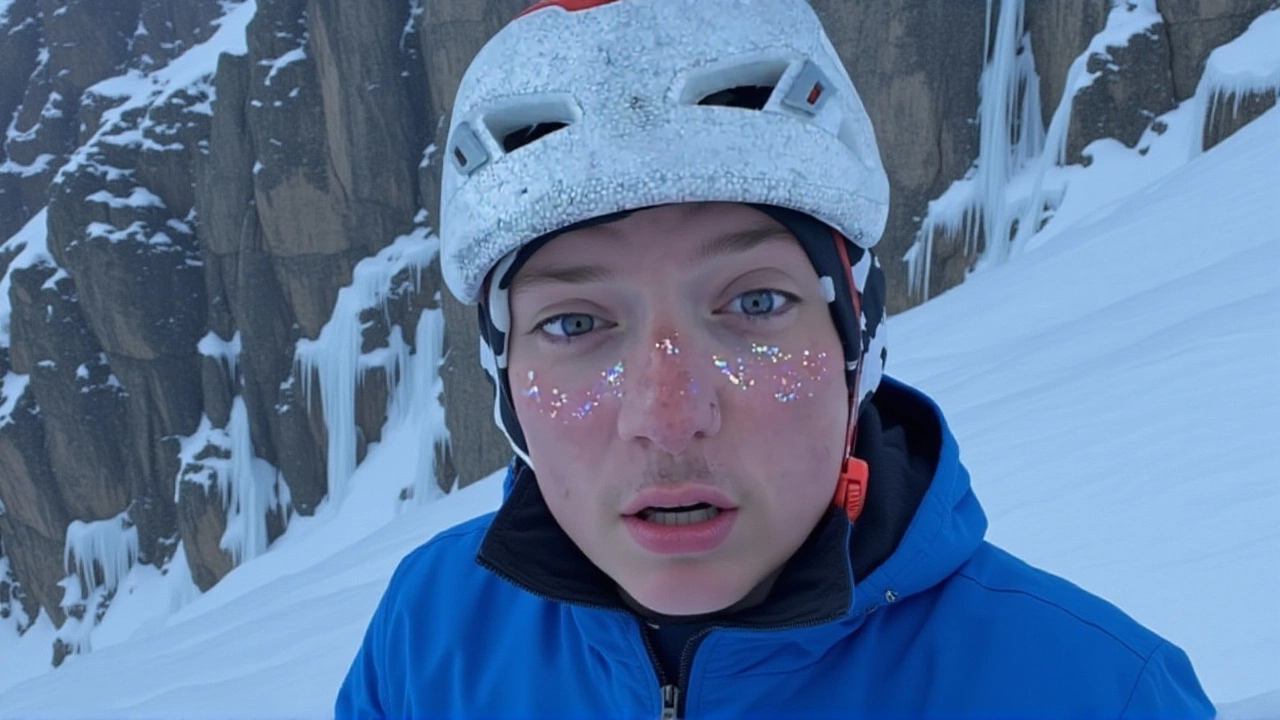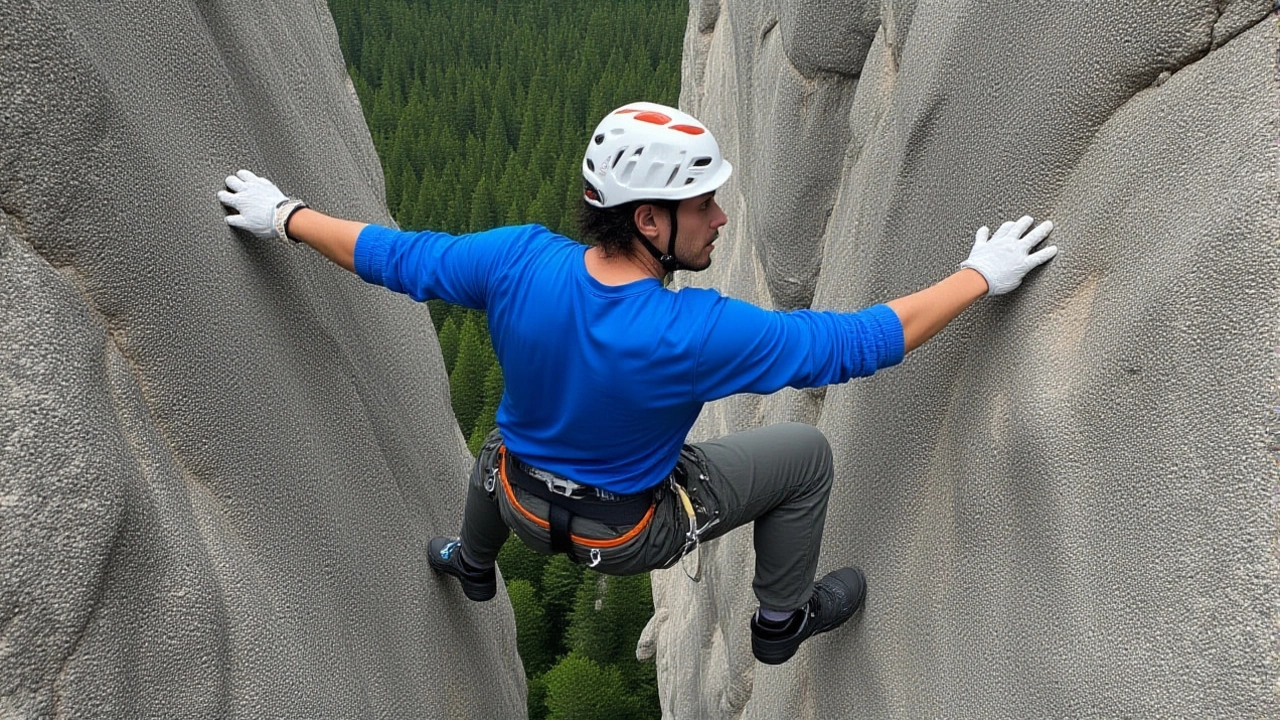When Balin Miller, a 23‑year‑old alpinist from Anchorage, Alaska, fell to his death from El Capitan in Yosemite National Park on Wednesday, the tragedy was inadvertently captured on a live social‑media stream.
The incident unfolded just after Miller completed a summit push on the iconic 3,000‑foot granite wall, an achievement that even seasoned climbers reserve for the best of the best. According to Tom Evans, a long‑time Yosemite photographer who was on site, Miller was hauling a gear bag that became snagged near the top. Still tied to his rope, he decided to rappel down, retrieve the equipment and fix the problem.
Background: Why El Capitan Is Both Dream and Danger
El Capitan has been the holy grail of big‑wall climbing since the 1950s. Its sheer vertical face, rising 3,000 feet above the valley floor, draws climbers from every continent. The wall’s most famous route, the Nose, was first conquered in 1958 and still serves as a benchmark for technical skill, endurance, and logistical planning.
Because of its difficulty, climbers often spend multiple days on the wall, hauling gear, bivouacking on ledges and using complex rope systems. Mistakes that might be trivial on a short sport route become life‑threatening on a route like El Capitan, where rescue options are limited and weather can change in minutes.
What Went Wrong: A Step‑by‑Step Account
Evans posted a detailed recount on Facebook, noting that Miller’s rope was several feet short of the stuck bag when he began his descent. The climber, however, appeared unaware of the gap. As Miller rappelled, the rope slipped off the anchor point and he fell, plummeting roughly 200 feet to the valley floor.
The fatal error, according to climbing experts, was rappelling without a stopper knot at the rope’s end. A stopper knot—often a figure‑eight—prevents a climber from sliding off the rope entirely. Some climbers avoid it, fearing the knot could snag on edges or require extra time to untie, but the trade‑off is a dramatically higher risk of a "rope‑out" accident.
Evans’ eyewitness account, combined with the live‑stream footage, shows Miller’s descent was rapid and unimpeded, suggesting he likely didn’t realize the rope had run out until it was too late. No other climbers were on the wall at the moment, and the accident occurred just as the sun was beginning to set, further complicating any immediate rescue attempts.
Safety Practices and How This Mistake Is Common
Rappelling off the end of a rope is listed by the American Alpine Club as one of the most preventable climbing fatalities. In their 2023 safety report, the club noted that 12 % of rope‑related deaths involved a missing stopper knot. The rationale for skipping the knot varies: some climbers cite efficiency, while others claim the knot can become "jammed" in tight cracks—a problem that is usually solvable with proper technique.
Professional guide‑companies operating in Yosemite, such as Yosemite Mountaineering School, train students to always tie a stopper knot before every rappel, regardless of perceived time pressure. The school’s lead instructor, Laura Chen, told us that the habit of tying the knot becomes second nature after a few ascents.
Community Reaction: Grief, Tribute, and a Call for Change
Within hours of the livestream, climbers worldwide flooded social media with tributes. The hashtag #RememberBalin trended on Instagram, and several prominent climbers posted e‑cards commemorating Miller’s passion for the sport.
"Balin was the kind of climber who pushed limits but always looked out for his partners," wrote veteran alpinist Megan O'Leary on a climbing forum. "His loss is a stark reminder that even the most skilled can make a fatal mistake if a simple safety step is missed."
The tragedy also sparked renewed debate about the role of live‑streaming in high‑risk activities. Some argue that the desire for real‑time audience engagement may encourage climbers to take unnecessary risks, while others claim it raises awareness of the sport’s challenges.
Park Response and the Bigger Picture
Officials from National Park Service did not immediately comment, likely because many staff members were on furlough due to the federal government shutdown that began on October 1, 2023. The shutdown has left several park agencies scrambling to maintain essential services, and routine media inquiries have been delayed.
When reached later in the week, a spokesperson for Yosemite said the park would cooperate fully with any ongoing investigation and reiterated the importance of adhering to safety protocols prescribed by the park’s climbing regulations.
Beyond the immediate incident, the accident underscores a broader issue: the tension between the climbing community’s push for greater visibility—through livestreams, sponsorships, and social media—and the timeless need for disciplined safety habits. As climbing prepares for its debut in the 2028 Summer Olympics, the sport’s governing bodies are likely to revisit training curricula, emphasizing fundamentals like stopper knots to safeguard an increasingly global athlete base.
What Lies Ahead: Prevention and Awareness
In the weeks following Miller’s death, several climbing gyms across the United States announced free safety‑knot workshops, hoping to honor his memory by preventing similar tragedies. The American Alpine Club also updated its online resources, adding a short video titled “One Knot Can Save a Life,” which demonstrates how to tie a figure‑eight stopper in under five seconds.
While no single accident can change a culture overnight, the combination of community mourning, educational outreach, and policy attention may gradually shift attitudes toward a more safety‑first climbing ethic.

Frequently Asked Questions
How did the rope‑out happen on El Capitan?
Miller began rappelling to retrieve a gear bag that had become stuck near the summit. Because his rope was several feet short of the bag, the rope slipped off the anchor point. Without a stopper knot at the end, the rope ran out completely, causing him to fall over 200 feet.
Why do some climbers skip the stopper knot?
Many cite efficiency—tying and untying a knot can add minutes, especially on long routes. Others worry a knot might snag in cracks or get jammed, requiring extra work. However, safety experts argue the time saved is never worth the increased risk of a fatal rope‑out.
What impact has the federal shutdown had on the park’s response?
The shutdown placed many National Park Service staff on furlough, slowing official communications and limiting on‑site personnel. As a result, immediate comments from Yosemite officials were delayed, though they pledged full cooperation once operations resume.
What steps are being taken to prevent similar accidents?
Climbing gyms nationwide are offering free workshops on rope safety, emphasizing the figure‑eight stopper knot. The American Alpine Club has also released new educational videos, and several guide services are reinforcing mandatory knot checks before every rappel.
Who was Balin Miller in the climbing community?
Miller was a rising Alaskan climber known for tackling big walls in the Pacific Northwest and the Rockies. Friends described him as bold, technically proficient, and eager to push personal limits, earning respect despite his relatively young age of 23.


